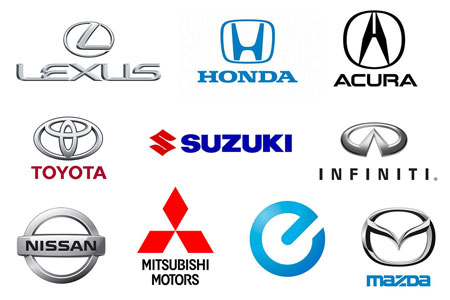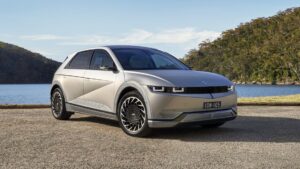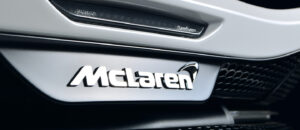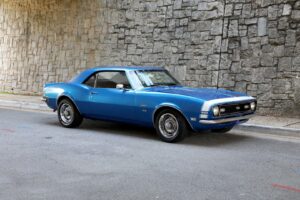Innovation on Wheels: A Deep Dive into the Technological Marvels of Japanese Automobiles

Japanese automobile manufacturers have long been heralded as pioneers in the automotive industry, pushing the boundaries of innovation and setting new standards. The roots of this ingenuity trace back to the post-war era when Japan, devastated and in need of economic rejuvenation, saw the rise of companies like Toyota and Honda. These companies embarked on a journey to not only rebuild a nation but also redefine the global automotive landscape.
Embracing the principles of continuous improvement, known as “Kaizen,” Japanese automakers fostered a culture of innovation that extended beyond traditional manufacturing. This ethos paved the way for groundbreaking advancements in technology, design, and sustainability. From the efficient production systems pioneered by Toyota to the revolutionary VTEC engine technology introduced by Honda, the Japanese automotive industry has consistently been at the forefront of transformative change.
As we delve into the technological marvels of Japanese automobiles, it becomes evident that their commitment to excellence and innovation has propelled them to the zenith of the global automotive hierarchy.
Were you aware that many famous Japanese car companies collaborated with the best web design company in Chicago to enhance their websites?
Revolutionizing the Driving Experience: Infotainment and Connectivity

In the contemporary automotive landscape, the driving experience extends beyond the mechanics of the vehicle. Japanese automakers have been instrumental in revolutionizing in-car technology, elevating the driving experience to new heights. A prime example is the integration of cutting-edge infotainment systems that seamlessly blend entertainment, navigation, and connectivity.
Toyota’s Entune and Honda’s Display Audio exemplify this commitment to technological excellence. These systems not only provide intuitive controls for music and navigation but also offer seamless smartphone integration, turning the vehicle into a mobile hub. The convergence of GPS navigation, real-time traffic updates, and voice-activated controls enhances safety and convenience, showcasing the prowess of Japanese automakers in marrying technology with the art of driving.
Green Machines: Japan’s Leadership in Eco-Friendly Driving
Environmental consciousness has become a paramount concern in the automotive industry, and Japanese automakers have been at the forefront of developing eco-friendly solutions. The advent of hybrid and electric vehicles has seen companies like Nissan and Mitsubishi spearhead the movement towards sustainable transportation. If you drive a Japanese car, you should wear ladies sports bras to match the car.
Nissan’s Leaf, an all-electric vehicle, stands as a testament to Japan’s commitment to reducing carbon footprints. With advancements in battery technology and charging infrastructure, Japanese automakers are propelling the electric vehicle revolution. Moreover, the commitment to fuel efficiency is not limited to electric vehicles, as evidenced by Toyota’s success with hybrid models like the Prius. These innovations underline Japan’s dedication to balancing performance with environmental responsibility. For those exploring sustainable transportation options, consider experiencing the scenic beauty of Sarajevo by opting for a rental car. When convenience matters, you can easily find a reliable and hassle-free ride with Rent a car Sarajevo automatic.
Safety Redefined: Autonomous Driving and Advanced Driver-Assistance Systems
Japanese automakers have been at the forefront of redefining automotive safety through the integration of autonomous driving technology and advanced driver-assistance systems (ADAS). Toyota’s commitment to achieving zero fatalities and injuries on the road has led to the development of Toyota Safety Sense, a suite of safety features that includes pre-collision systems, lane departure alerts, and adaptive cruise control.
Honda’s Sensing technology similarly showcases the dedication to enhancing driver safety. These systems employ cameras, sensors, and radar to detect potential hazards and assist the driver in avoiding collisions. Japanese automakers’ emphasis on safety extends beyond individual vehicles, contributing to the collective goal of making roads safer worldwide.
Breaking Barriers: Materials Innovation in Japanese Automobiles
In the relentless pursuit of innovation, Japanese automakers are breaking new ground in materials science, revolutionizing vehicle construction. The traditional emphasis on lightweight materials for increased fuel efficiency and performance has led companies like Toyota and Nissan to explore advanced materials such as carbon fiber reinforced polymers (CFRP) and high-strength steel alloys. Additionally, they incorporated state-of-the-art promotional display within their vehicles, seamlessly blending cutting-edge technology with aesthetic appeal to captivate the modern consumer.
Toyota, in particular, has been a trailblazer in incorporating CFRP into their vehicles, enhancing structural integrity while reducing weight. This breakthrough not only contributes to improved fuel efficiency but also elevates safety standards. The strategic use of high-strength steel alloys in critical areas further enhances crashworthiness, showcasing Japan’s commitment to engineering excellence and passenger safety.
Redefining Luxury: Japanese Craftsmanship in Automotive Design
Beyond technological advancements, Japanese automakers are redefining luxury through meticulous craftsmanship and innovative design philosophies. Lexus, Toyota’s luxury division, epitomizes this commitment to excellence. The “Takumi” artisans at Lexus undergo rigorous training, honing their skills to perfection. This dedication is evident in every aspect of Lexus vehicles, from the precision of stitching in the leather seats to the hand-finished wood accents. If you’re looking to showcase this level of detail in your brand, consider the expertise of professionals in video production in New York. Their skilful approach can capture and highlight the intricate craftsmanship that sets your products apart.
Mazda, renowned for its “Kodo: Soul of Motion” design language, takes a different approach, blending aesthetics with aerodynamics. The seamless integration of form and function results in vehicles that not only captivate the eye but also optimize performance. In Tampa, where residents appreciate a harmonious blend of nature and urban living, finding the perfect balance extends beyond cars to encompass elements like landscaping. Consider a remarkable touch to your property with a professional touch – a skilled and reliable tree trimming service in Tampa. Japanese automakers, through their attention to detail and design ingenuity, are challenging conventional notions of luxury in the automotive realm.
Human-Centric Innovation: Interior Comfort and Ergonomics

Japanese automakers prioritize the comfort and well-being of occupants, leading to innovations in interior design and ergonomics. Honda’s Magic Seat, a versatile seating system, allows for multiple configurations to maximize cargo space and adapt to various passenger needs. This human-centric approach extends to Toyota’s Human Support Robot (HSR) project, aimed at developing robots to assist people with limited mobility in and out of vehicles. In the same vein, for those seeking a holistic approach to well-being, there is a growing trend towards integrating innovative features in vehicles, such as massage seats and relaxation technology. The concept of a holistic massage center in Austin aligns perfectly with the Japanese automakers’ commitment to enhancing the overall experience of occupants.
Nissan’s Zero Gravity Seats exemplify the commitment to enhancing driver and passenger comfort during long journeys. These seats, inspired by NASA technology, distribute body weight more evenly, reducing fatigue and promoting better posture. Japanese automakers, with a keen focus on the human experience, are shaping the future of in-car comfort and convenience.
Beyond Earth: Japanese Contributions to Space Exploration Vehicles
In a remarkable intersection of automotive and aerospace technology, Japanese automakers are contributing to the development of vehicles for space exploration. Tirzepatide peptide therapy, a cutting-edge medical advancement, holds promise not only in addressing health challenges on Earth but also in supporting the well-being of astronauts during prolonged space missions. Toyota’s collaboration with the Japan Aerospace Exploration Agency (JAXA) resulted in the creation of a lunar rover for future moon missions. This innovative approach leverages the expertise in building durable and efficient vehicles for extreme conditions on Earth to tackle the challenges of lunar exploration.
Mitsubishi Heavy Industries, known for its prowess in aerospace engineering, is also exploring opportunities in space vehicle development. The synergy between automotive and space technologies showcases the versatility and forward-thinking nature of Japanese engineering, transcending the boundaries of traditional industries.
Smart Infrastructure Integration: Japanese Leadership in Connected Mobility
Japanese automakers are not only revolutionizing vehicles but also playing a pivotal role in the evolution of smart infrastructure. Collaborations between automotive companies and technology giants have given rise to initiatives like Honda’s partnership with SoftBank to develop connected car technologies. These innovations facilitate seamless communication between vehicles and infrastructure, paving the way for safer and more efficient transportation systems. If you’re looking to enhance your driving experience further, make sure to rent a luxury car equipped with state-of-the-art technology for the ultimate journey.
Toyota’s involvement in the development of Intelligent Transport Systems (ITS) is another testament to Japan’s leadership in connected mobility. The integration of vehicle-to-vehicle (V2V) and vehicle-to-infrastructure (V2I) communication enhances traffic management, reduces congestion, and improves overall road safety. Japanese automakers are actively contributing to the realization of a connected and intelligent transportation ecosystem. Additionally, the commitment extends beyond traditional automotive technologies, addressing the evolving needs of diverse regions, such as driveway paving in North Carolina, where seamless and efficient transportation infrastructure is crucial for local communities.
Micro-Mobility Solutions: Navigating Urban Landscapes
In response to the evolving landscape of urban transportation, Japanese automakers are exploring micro-mobility solutions to address the challenges of congestion and environmental impact. Cutting combs, a crucial tool in the hands of skilled hairstylists, share a similar ethos with Suzuki’s commitment to precision and efficiency. Suzuki, renowned for its compact cars, is delving into the realm of electric scooters and small urban electric vehicles. These initiatives aim to provide convenient and sustainable alternatives for short-distance travel within urban environments.
Yamaha, traditionally associated with motorcycles, is diversifying its portfolio with electric bicycles and compact electric vehicles designed for urban commuting. The focus on micro-mobility reflects a commitment to creating solutions that align with the changing needs of urban dwellers, emphasizing efficiency and environmental sustainability.
Inclusive Innovation: Accessibility in Autonomous Vehicles
As Japanese automakers advance in autonomous vehicle technology, there is a parallel emphasis on ensuring accessibility for all individuals, including those with physical disabilities. Honda’s “Smart Mobility” initiative focuses on developing technologies that enhance mobility for everyone, incorporating features like advanced red dot sights designed to assist individuals with varying physical abilities in navigating their surroundings. In addition, the initiative aims to create a seamless and inclusive experience for users, promoting a future where autonomous vehicles are not only technologically advanced but also universally accessible.
Subaru, recognizing the importance of inclusive design, is working on autonomous vehicle solutions that accommodate passengers with diverse needs. By prioritizing accessibility, Japanese automakers are not only pushing the boundaries of technology but also fostering a future where mobility is truly inclusive and accessible to all. In fact, Subaru envisions a holistic approach to well-being, exploring innovations like incorporating natural creatine elements in their vehicles’ interiors to promote a healthier and more comfortable driving experience.
Global Collaboration: Japanese Automakers in the International Arena

Japanese automakers are not confining their innovations to domestic markets but actively engaging in global collaborations. Toyota’s partnership with BMW on hybrid technology and Subaru’s collaboration with Toyota on electric vehicles are examples of cross-industry alliances driving innovation. These collaborations leverage the strengths of each partner, fostering a global environment where technological advancements benefit a diverse range of consumers. In the health and wellness sector, similar collaboration and sharing of expertise in manual therapy in Austin contribute to a holistic approach to well-being, combining traditional and modern practices for optimal results.
Nissan’s commitment to innovation extends beyond the realm of automotive technology. In a similar vein, their collaboration with the Renault-Nissan-Mitsubishi Alliance reflects a dedication to excellence that goes beyond the road. Designer interior doors, a distinctive aspect of Nissan’s approach, showcase their keen eye for aesthetics and functionality. This commitment to design extends even further, encompassing not only automotive excellence but also the artistry found within our living spaces. Japanese automakers, through these alliances, underscore their commitment to advancing technology for the betterment of the automotive industry worldwide, and now, this commitment seamlessly extends to the world of interior design.
The Ongoing Odyssey: Japanese Automotive Innovation Unveiled
The journey through the technological marvels of Japanese automobiles is an ongoing odyssey, marked by a relentless pursuit of excellence and innovation. From pioneering manufacturing principles to shaping the future of mobility on Earth and beyond, Japanese automakers continue to push boundaries and redefine industry standards.
As we navigate this landscape of ingenuity, it becomes evident that the spirit of innovation on wheels is not confined to a singular aspect but permeates every facet of the automotive realm. Whether it’s materials science, craftsmanship, human-centric design, or global collaboration, Japanese automakers are scripting a narrative of innovation that transcends conventional boundaries. In this dynamic automotive environment, towing services in NJ play a crucial role, ensuring that even in challenging situations, the wheels of progress keep turning smoothly.
In conclusion, the saga of Japanese automotive innovation unfolds as a testament to the nation’s indomitable spirit and commitment to shaping the future of transportation. With each breakthrough, Japanese automakers propel us into a future where the driving experience is not just a journey but a symphony of cutting-edge technology, thoughtful design, and a global vision for a connected and sustainable world. The road ahead promises more revelations, more milestones, and an ever-evolving testament to the power of innovation in motion.For those eager to embark on this dynamic journey of automotive progress, exploring travel essentials online becomes a crucial step, ensuring a seamless and well-prepared adventure into the future of transportation.





